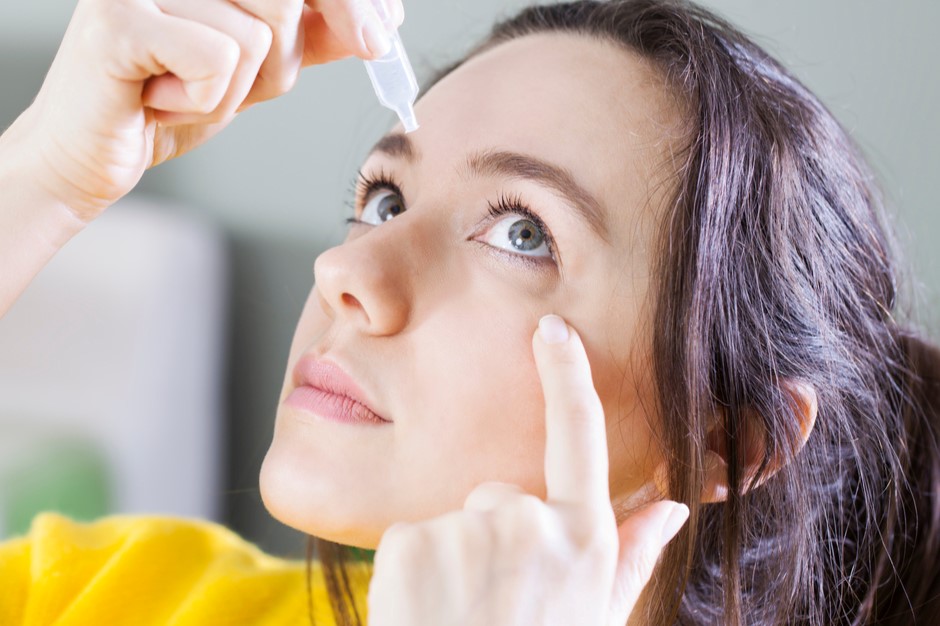
Symptoms, causes and treatment of dacryocystitis
Let’s talk about dacryocystitis: the lacrimal ducts are the drainage system of tears produced by the lacrimal glands. They consist of the lacrimal dots, the lacrimal canaliculi, the lacrimal sac and the nasolacrimal duct, which conveys the tears into the nose, in the inferior meatus
When the nasolacrimal duct becomes obstructed, it can give rise to dacryocystitis, an unpleasant condition.
Dacryocystitis: what is it?
The basis of dacryocystitis is almost always an occlusion of the nasolacrimal duct, i.e. an obstacle to the normal and natural outflow of tears.
This occlusion can have different origins
- congenital, at birth;
- idiopathic (the majority of cases);
- traumas of the facial massif;
- inflammatory diseases;
- dacryoliths, i.e. small stones in the eye canals.
Tears, finding no outlet in the eye, arrive in the lacrimal sac where they stagnate; in association with bacteria, naturally present in the organ, these can become pathogenic and give rise to an acute infection: dacryocystitis.
There is no more drainage of the tears so the sac becomes blind: not only the tears stagnate, but also the bacteria that arrive from outside and these can give rise to the infection.
It can affect any individual indiscriminately and fortunately only a portion of patients who have duct obstruction can develop dacryocystitis.
Symptoms of dacryocystitis
Dacryocystitis has obvious clinical signs, which can be easily recognised:
- swelling and pain of the lacrimal sac;
- redness of the skin around the sac;
- warmth of the affected area;
- discharge of mucus or pus from the tear sacs upon squeezing the sac.
Therapies for dacryocystitis: from hydrostatic massage to surgery
Dacryocystitis, when it arises, can be addressed with different approaches depending on the age of the patient.
Therapy in the newborn
In infants, newborns, lacrimal duct obstruction is congenital and is due to failure to perforate Hasner’s valve, the membrane that covers the terminal end of the naso- lacrimal duct and which normally opens during the first few hours of life.
In a small percentage of infants, the valve does not open and the child becomes symptomatic with lacrimation and some secretion.
Dacryocystitis thus becomes a complication of this situation.
The recommended therapy, effective in 90% of cases to restore tear drainage and prevent dacryocystitis, includes
- hydrostatic Crigler massages, which facilitate the squeezing of the lacrimal sac to send the tear under pressure in the direction of the duct;
- topical antibiotic therapy, such as eye drops.
If the therapy, carried out regularly and efficiently for at least 3 months, is not effective, then, after the child is 6 months old, a probing of the tear ducts is carried out, mechanically breaking Hasner’s valve with a tube.
Therapy in adults
The main therapy used in adults for dacryocystitis in the acute phase is systemic antibiotics, i.e. those that act on the microbes by inhibiting their proliferation.
Sometimes this approach alone is not sufficient; it is therefore necessary to incise and drain the lacrimal sac.
Once the acute episode has been resolved, however, the obstruction of the naso- lacrimal duct must be addressed and a dacryocystorhinostomy scheduled.
A bypass operation, between the lacrimal sac and the nose, in which the normal drainage of tears is restored and, at the same time, the cause of the dacryocystitis is eliminated, i.e. the stagnation inside the lacrimal sac that gives rise to the infection.
The operation is strictly advisable as patients may be prone to recurrences even at short intervals of time.
When the first case of dacryocystitis occurs, the patient is immediately put on the list for surgery.
It can be performed under local anaesthesia, with selected patients, or under general anaesthesia; it involves half an hour of surgical time and a one-day hospital stay.
Recovery is total and complete: cases of post-surgical recurrence are estimated at around 10%.
Read Also
Emergency Live Even More…Live: Download The New Free App Of Your Newspaper For IOS And Android
Entropion: The Symptoms And How To Treat It
Early Diagnosis Of Maculopathies: The Role Of Optical Coherence Tomography OCT
What Is Maculopathy, Or Macular Degeneration
Eye For Health: Cataract Surgery With Intraocular Lenses To Correct Visual Defects
Cataract: Symptoms, Causes And Intervention
Inflammations Of The Eye: Uveitis
Corneal Keratoconus, Corneal Cross-Linking UVA Treatment
Myopia: What It Is And How To Treat It
Presbyopia: What Are The Symptoms And How To Correct It
Nearsightedness: What It Myopia And How To Correct It
Red Eyes: What Can Be The Causes Of Conjunctival Hyperemia?
Autoimmune Diseases: The Sand In The Eyes Of Sjögren’s Syndrome
Corneal Abrasions And Foreign Bodies In The Eye: What To Do? Diagnosis And Treatment
Covid, A ‘Mask’ For The Eyes Thanks To Ozone Gel: An Ophthalmic Gel Under Study
Dry Eyes In Winter: What Causes Dry Eye In This Season?
What Is Aberrometry? Discovering The Aberrations Of The Eye
Dry Eye Syndrome: Symptoms, Causes And Remedies
What Is Macular Pucker And What Are The Symptoms
Maculopathy: Symptoms And How To Treat It
Amaurosis: What It Is, Symptoms, Causes And Treatment


